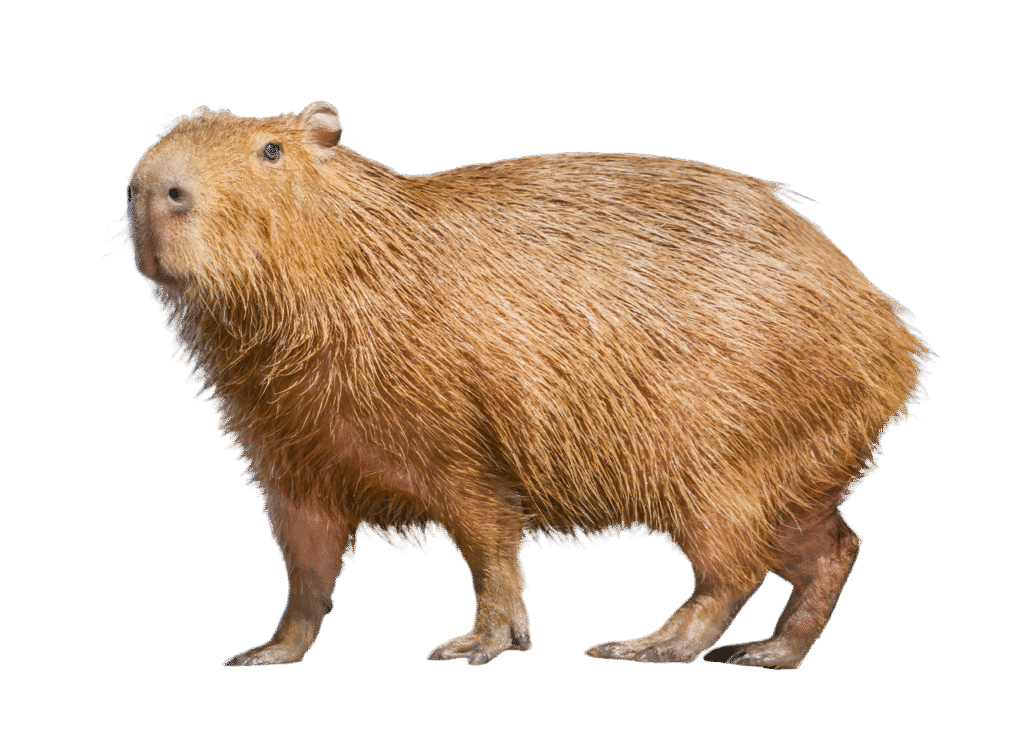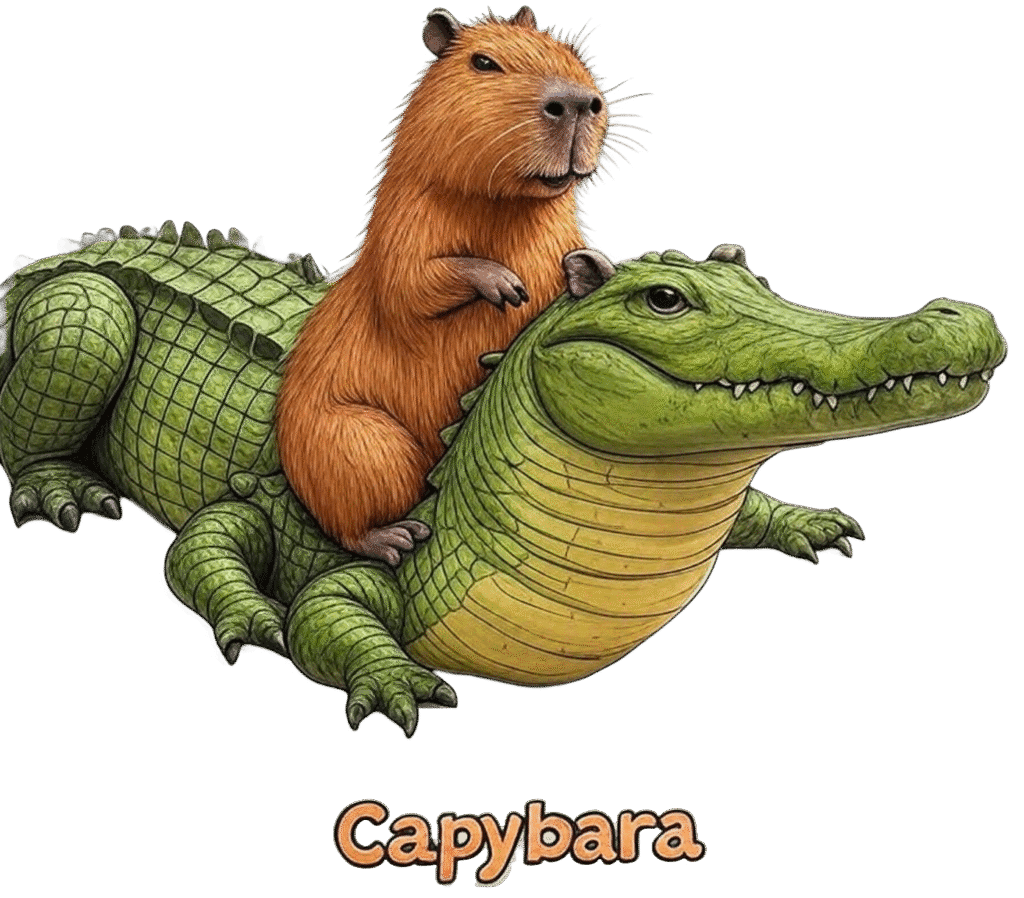Everything You Need to Know About Capybaras
Uncover why this laid-back animal is taking over the internet and learn about their gentle nature and surprising social life

10 Capybara Facts You've Never Heard Before
1. Their name means "Master of the Grasses"
The word capybara comes from the Tupi language, a South American indigenous language. It roughly translates to “Eater of the Thin Grasses.
2. They eat their own poop!
Capybaras are coprophagous, meaning they eat their feces. This may sound strange, but it’s an efficient way for them to re-ingest undigested food and extract all the nutrients.
3. They communicate with sound
Capybaras make a variety of vocalizations, including purrs, barks, whistles, and clicks. Each sound has a specific meaning, from a friendly purr to a warning bark.
4. Their teeth never stop growing
Like other rodents, a capybara’s teeth grow continuously throughout its life. They must constantly chew on bark, grasses, and other tough materials to grind them down.
5. They are social butterflies
Capybaras are famous for their ability to peacefully coexist with almost any other animal, from birds and monkeys to turtles and crocodiles. They are often called “nature’s ottoman” because other animals love to sit on them.
6. They can be surprisingly fast
Despite their large, barrel-shaped bodies, capybaras can run at speeds of up to 22 mph (35 km/h) to escape predators like jaguars, anacondas, and caimans.
7. They are excellent swimmers
Capybaras have webbed feet and can hold their breath for up to five minutes underwater. They often sleep submerged, with just their noses peeking out of the water.
8. They have a secret scent gland.
Male capybaras have a prominent scent gland on the top of their snout called a moroñcho. They use this gland to mark their territory and attract mates by rubbing it on grass and trees.
9. They are the world's largest rodent
The capybara is the biggest rodent on the planet, with adults weighing as much as a full-grown human. They can grow up to 4.3 feet (1.3 meters) long and stand 2 feet (0.6 meters) tall.
10. They are a symbol of Argentina's class struggle
In 2021, a group of capybaras invaded a wealthy, gated community in Buenos Aires, causing a viral sensation. They were adopted as a symbol of anti-capitalist protest, representing “nature reclaiming its own.
video source: animalsdiscover
Sientific facts About Capybaras
- Classification: The capybara (Hydrochoerus hydrochaeris) is the world’s largest living rodent. It belongs to the family Caviidae, making it closely related to guinea pigs and rock cavies.
- Size & Appearance: Adults typically weigh between 77 to 145 pounds (35-66 kg) and can measure up to 4 feet (1.3 meters) in length. They have a barrel-shaped body, short legs, coarse brownish fur, and partially webbed feet.
- Habitat & Distribution: Capybaras are strictly semi-aquatic mammals, found exclusively in South America. They inhabit areas with constant access to water, such as flooded grasslands, marshes, rivers, lakes, and swamps.
- Diet: They are herbivores, primarily grazing on grasses and aquatic plants. A unique aspect of their diet is coprophagy (eating their own feces) to re-digest cellulose and extract maximum nutrients.
- Social Behavior: Highly social, capybaras live in groups of 10-20 individuals, though larger aggregations can form. Group living is crucial for their survival, providing protection from predators.
- Reproduction: Mating occurs exclusively in water. After a gestation period of 130-150 days, females typically give birth to 2-8 precocial young (average of 4) who can walk and graze shortly after birth.
- Key Adaptations: Their webbed feet, eyes, ears, and nostrils positioned on top of their heads, and ability to hold their breath for up to five minutes, are all adaptations for their semi-aquatic lifestyle, allowing them to swim, hide from
- Read Moe Fascinating Scientific facts about Capybaras in our Capybara Fact Sheet
Top Trending Capybara TikTok Videos
@henriqueolsen Capybara is the boss in the swamp! 😆 #wildlifevideos #capybaratiktok #capybaralove #rodents #funvideos #pantanal #animalsoftiktok ♬ original sound - Henrique Olsen | Wildlife 🐆
Watch Even More Trending Funny Capybara Videos here
